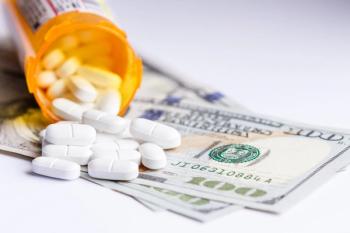
- Volume 0 0
Companies Rush to Merge to Expand Markets
Marriage frenzy took hold of the generics market in 2005. Analysts believe that this is part of an ongoing consolidation trend that will continue for the next few years. As more popular branded drugs come off patent (Table 1), staying in the game is expected to become more difficult.
Teva Pharmaceutical Industries Ltd, Sandoz/Novartis, and Actavis have been the busiest deal makers in recent months (Table 2), and there are rumblings that generics manufacturers from India will start shopping more fervently as well, through leveraged buyouts and with the help of venture firms.
Less-than-stellar earnings reports among publicly traded generics makers, thin margins, and the goal to develop new branded drugs have all ignited merger and acquisition activities and alliances (Table 3).
"The name of the game strategically for most [generics makers], if not all, is to get enough generic products on the market (especially generic copies of some top-selling brand name drugs) to generate enough revenue so that they can begin research and development work to bring branded drugs to market and get into the higher margin industry," says Jon Hess, research team leader of Cutting Edge Info.
A common aim of moving up the value chain towards higher margins arguably motivates many companies to join forces. Fierce competition among generics makers has led to disappointing earnings, making any significant R&D investment impractical today for most unbranded players.
Big Pharma's generic offerings (authorized and branded generics) have also stolen sales and earnings from manufacturers of unbranded generics, making even well-established generics makers vulnerable. Wholesalers and other purchasers do not like buying generics from brand companies, however, because it gives the brands even more leverage than they have now, according to Richard Watson, an analyst with William Blair & Co LLC.
Even as the demand for unbranded drugs soars, it is a huge struggle for individual generics makers to get their medicines onto formularies. It is arguably the toughest obstacle unbranded players face today. Although insurers such as Aetna have taken the sting out of some of the marketing costs by sampling generic drugs to physicians, there is still the matter of making deals with volume buyers.
"An individual generic drug company has a limited family of drugs to market?the greater the range of drugs, the more effectively a generic drug manufacturer can market its drugs to the thousands of physicians, insurers, and pharmacy benefit managers [PBMs]," says David Balto, a partner at Kaplan, Miller, & Cerisi, whose clients include generics firms.
Although barriers to entry into this market are decidedly low, generics companies are eager to improve their ability to strike the most competitive deals with pharmacy chains, wholesalers, PBMs, and other key players in the supply chain. As Medicare, insurance carriers, lobbies (eg, the AARP), employers, and others fight to reduce health care costs with generic medications, generics manufacturers themselves must also lower their costs in order to compete.
Generics makers face considerable pricing pressures. To respond competitively to the purchasing strategies of volume buyers, generics companies must be ready to offer attractive deals.
For example, Walgreens has adopted electronic auctions to get the best prices on medicines from generics makers. The drugstore chain is also expected to purchase up to 15% of generic medicines on a drug-by-drug basis directly from Indian manufacturers in exchange for deep discounts, according to a report published by Lehman Brothers in October 2005. Generics companies must be able to anticipate and aggressively respond to that sort of dramatic shift in buying strategies.
Consolidation can offer companies skilled at integrating acquisitions economies of scale and scope. Such potential cost efficiencies could help arm companies to win business from companies like Walgreens.
Through acquisitions, generics makers also "bolt on manufacturing expertise and expand geographical coverage via acquisitions," said Watson. Increasing manufacturing expertise in key therapeutic areas can help strengthen product portfolios, which in turn can help increase cost efficiencies overall.
Companies with market presence and established distribution in countries where demand for generics is expected to grow can help improve the bottom line, especially since sales margins in the US market are getting decidedly thin. Indian and Eastern European generics companies are attractive acquisition targets because of the low costs of manufacturing and labor.
In the short term, it is not clear what effect consolidation will have on pricing. "I think the consolidation of branded and generics pharma hasn't had a huge impact on price competition yet. However, if the consolidation trend continues, it could start to become a factor," says Hess.
Not everyone in the supply chain is sure what the consolidation will mean for them, however. When the discussion turns to pricing, there is a notable attempt to be polite and vague. "The more manufacturers, the more competition there is. That's good for us," says J. Marc Bover, senior director of pharmaceutical purchasing at Rite-Aid.
Ms. Christopher is a freelance health care journalist based in Portland, Ore.
Articles in this issue
over 19 years ago
Should Pharmacists Receive Overtime Pay?over 19 years ago
Pharmacists—Cops or Not? (Part 2)over 19 years ago
canyouREADtheseRxs?over 19 years ago
compoundingHOTLINEover 19 years ago
NSAIDs and Antihypertensive Agentsover 19 years ago
FDA Approves New Constipation Drugover 19 years ago
Angina Drug Approvedover 19 years ago
Pancreatic Cancer Trials Offer Positive Resultsover 19 years ago
Cancer Drug Receives Approval for 2 Conditionsover 19 years ago
Long-term LNG/EE Use Does Not Hinder Future OvulationNewsletter
Stay informed on drug updates, treatment guidelines, and pharmacy practice trends—subscribe to Pharmacy Times for weekly clinical insights.


























































































































































































































